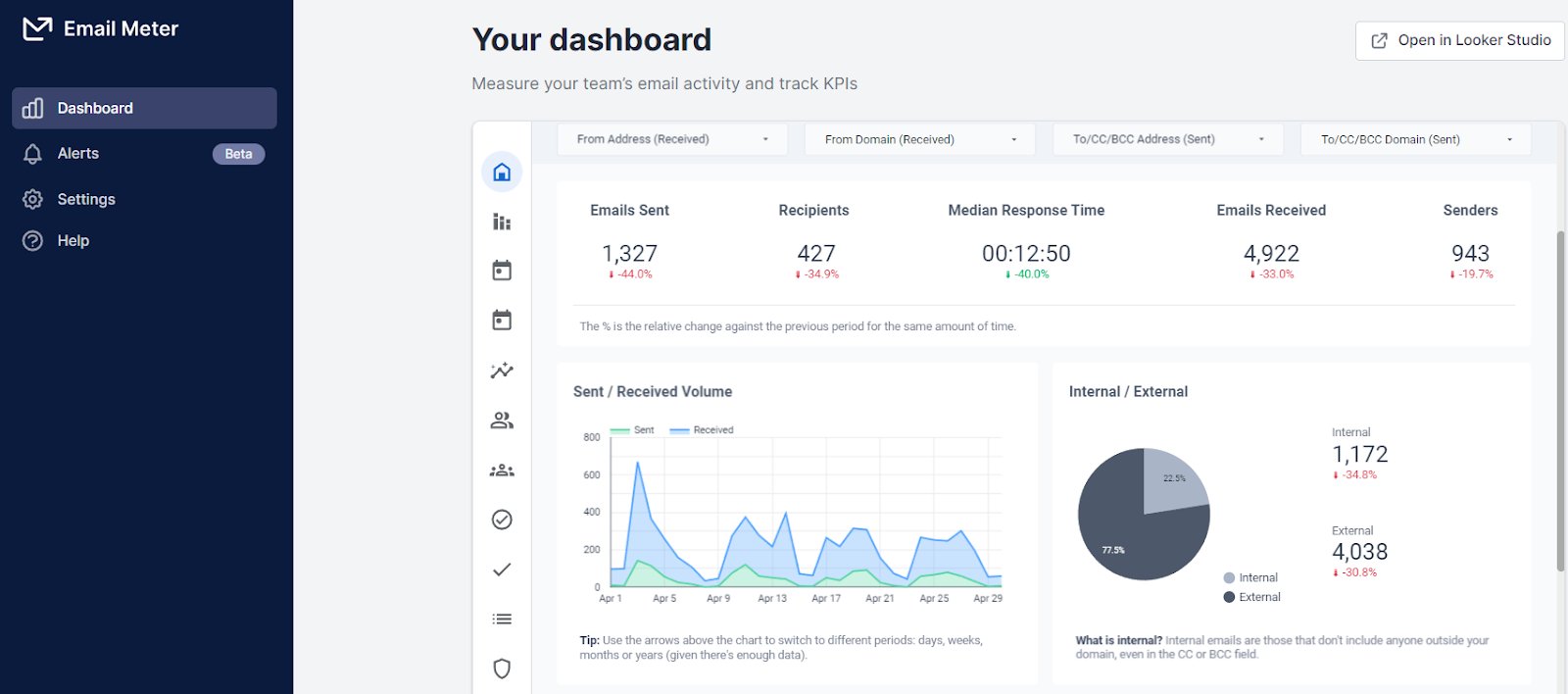Sales Development Representatives (SDRs) contribute anywhere from 30% to 45% to their company's total revenue, which makes them indispensable in driving growth and revenue generation.
As such, it is important for businesses to understand and implement the proper Key Performance Indicators (KPIs) for Sales Development Representatives to unlock the full potential of sales development efforts, while achieving revenue goals and objectives.
What are SDR KPIs?
SDR KPIs/SDR metrics KPIs are measurable metrics used to evaluate the effectiveness and performance of SDRs in generating leads, qualifying prospects, and driving revenue growth. These KPIs help organizations assess the success of their sales development efforts and identify areas for improvement.
The most important SDR KPIs include:
1. Number of qualified leads generated
This KPI measures the quantity of leads passed on to the sales team that meet specific qualification criteria. It reflects the SDR's ability to identify and engage with prospects who are likely to convert into customers, ultimately driving revenue growth.
2. Outbound call/Email activity
Tracking the number of outbound calls and emails made by SDRs provides insights into their proactive outreach efforts. It helps gauge the level of activity and engagement with prospects, allowing for optimization of communication strategies and resource allocation.
3. Conversion rates
Conversion rates indicate the effectiveness of SDRs in turning leads into opportunities or appointments. By monitoring conversion rates at different stages of the sales process, organizations can identify bottlenecks, refine messaging, and provide targeted training to improve overall performance.
4. Response rates
Response rates measure the percentage of prospects who respond to SDR outreach efforts, such as emails or calls. It indicates the effectiveness of messaging and the ability to capture prospect interest, guiding adjustments to outreach tactics for better engagement and conversion.
5. Meeting set and held
Tracking the number of meetings set is another important KPI for SDRs, as is the percentage of meetings that are successfully held. These provide insights into the quality of appointments secured, helping assess the SDR's ability to qualify leads, book meaningful discussions, and move prospects further down the sales funnel.
6. Sales Accepted Opportunities (SAOs)
SAOs represent the number of opportunities identified and accepted by the sales team based on SDR-generated leads. This metric measures the SDR's ability to deliver qualified opportunities that align with sales objectives, ultimately impacting revenue generation.
7. Pipeline contribution
Pipeline contribution measures the value of opportunities generated by SDRs that progress through the sales pipeline. It quantifies the impact of SDR efforts on the overall sales pipeline, highlighting their role in driving revenue growth and sales success.
8. Time-to-response
Time-to-response measures the speed at which SDRs follow up with inbound leads or inquiries. It reflects the organization's responsiveness to prospect inquiries and its ability to capitalize on opportunities promptly, which can significantly impact conversion rates and customer satisfaction.
Best Platforms for Measuring SDR KPIs
Several platforms are designed specifically for measuring and tracking SDR metrics KPIs effectively. Here are some of the best platforms known for their robust capabilities in this area:
1. Salesforce
Salesforce offers a comprehensive CRM platform with powerful reporting and analytics capabilities that allow organizations to track various SDR KPIs. Custom dashboards and reports can be created to monitor metrics such as lead generation, conversion rates, pipeline contribution, and more.
2. HubSpot
HubSpot provides a suite of sales and marketing tools, including CRM and sales automation features, with built-in reporting and analytics functionality. Users can track SDR KPIs such as lead generation, email engagement, deal progression, and sales performance through customizable dashboards and reports.
3. Outreach
Outreach is a sales engagement platform that helps organizations streamline their sales processes and track SDR performance. It offers features for managing prospecting activities, measuring outreach effectiveness, and analyzing key metrics such as activity levels, response rates, and meeting outcomes.
4. SalesLoft
SalesLoft is a sales engagement platform designed to optimize sales development activities and measure SDR performance. It provides tools for managing prospecting workflows, tracking engagement metrics, and generating insights into SDR effectiveness through customizable reports and analytics.
5. LinkedIn Sales Navigator
LinkedIn Sales Navigator offers advanced features for sales prospecting and lead generation, along with analytics capabilities to track SDR KPIs. Organizations can measure metrics such as InMail response rates, connection requests, lead interactions, and social selling activities to gauge SDR performance.
6. InsightSquared
InsightSquared is a sales analytics platform that integrates with CRM systems like Salesforce to provide comprehensive insights into sales performance, including SDR KPIs. It offers pre-built dashboards, reports, and forecasting tools to track metrics such as lead conversion rates, pipeline velocity, and revenue attribution.
7. Zoho CRM
Zoho CRM is a cloud-based CRM platform with reporting and analytics features to measure SDR KPIs. Users can create custom dashboards and reports to track metrics such as lead generation, email campaigns, sales pipeline, and deal progression.
Now, for email response time, Email Meter is the best tool that you can use.
Why Email Meter is the Best Platform for Measuring Email Response Time as an SDR KPI
1. Comprehensive email analytics
Email Meter provides comprehensive insights into email communication patterns, including response times, email volume, busiest times of the day, and more. This depth of email analytics allows SDRs and their managers to gain a clear understanding of response time performance and identify areas for improvement.
2. Customizable reporting
Email Meter allows users to generate customizable reports and dashboards tailored to their specific needs and preferences. SDRs can easily access and analyze response time data, identify trends, and track progress over time, facilitating continuous improvement efforts.
3. Actionable insights
Email Meter also provides actionable insights and recommendations based on response time analytics, helping SDRs prioritize and manage their email communications more effectively and set a standard response time policy. This proactive approach enables SDRs to optimize response times and enhance overall productivity and customer satisfaction.

Excited to give it a go? Request a demo today.


























